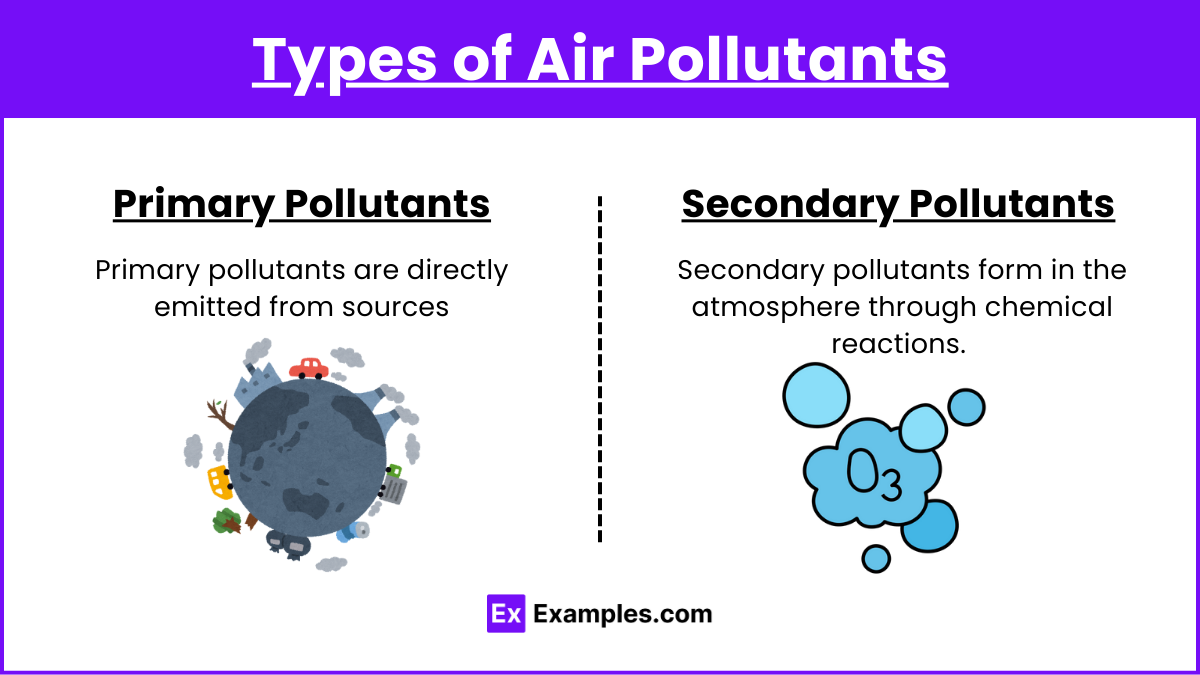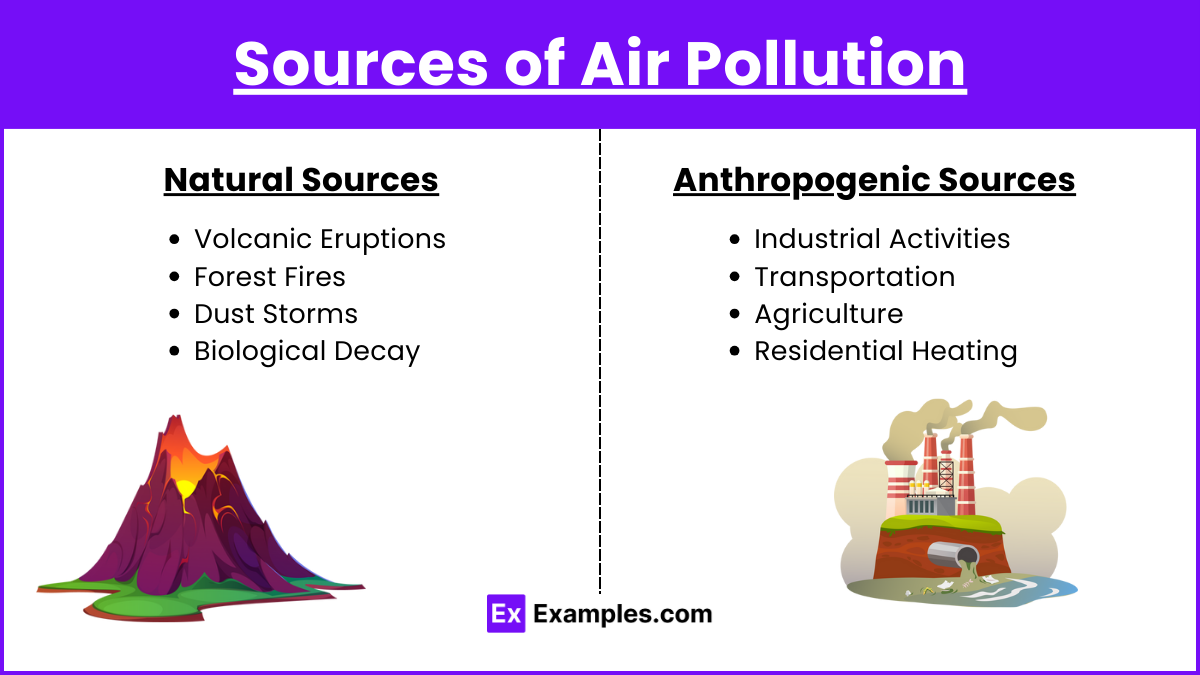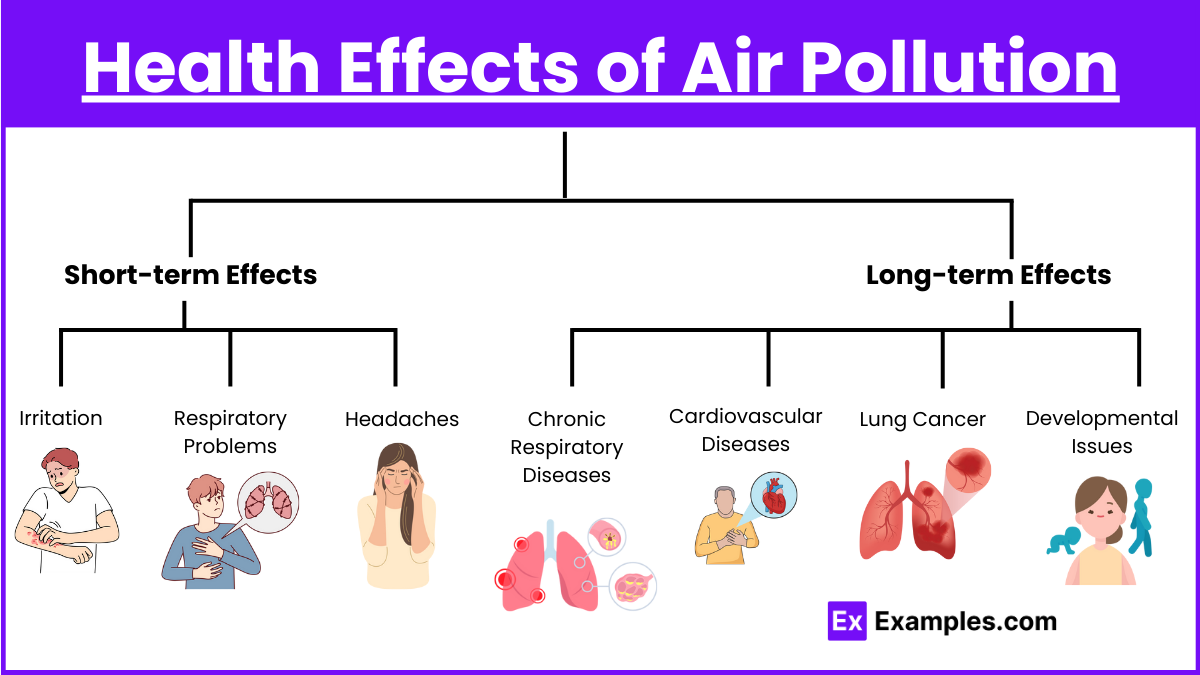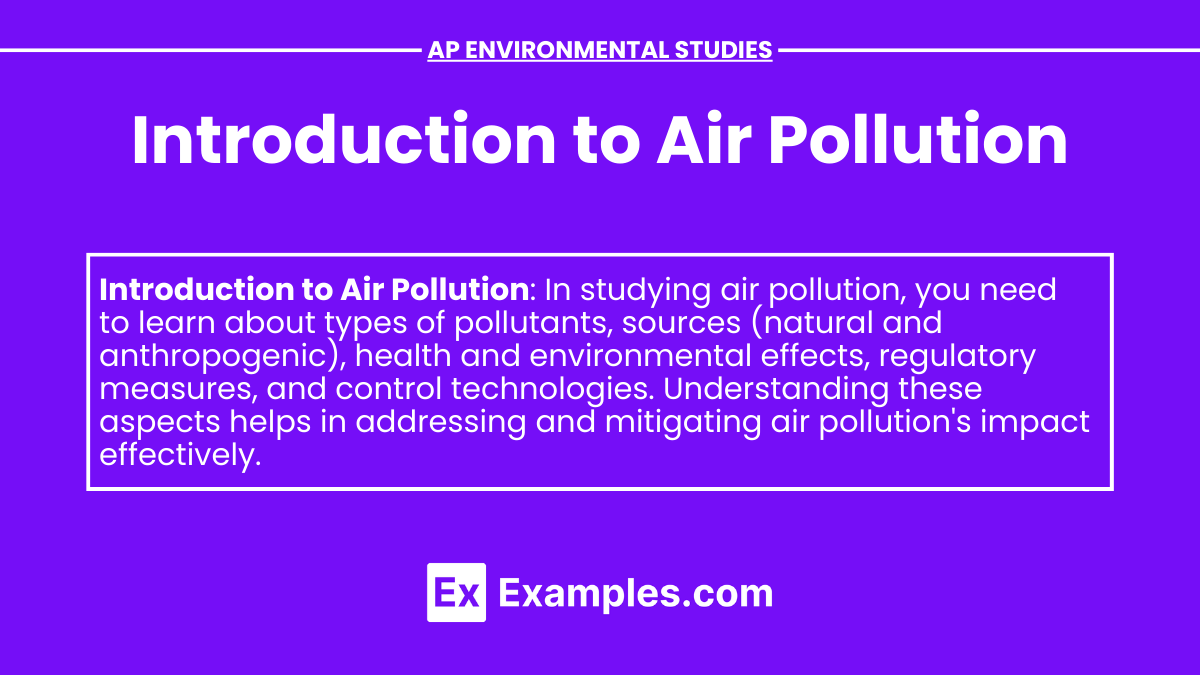Air pollution, a critical issue in AP Environmental Science, impacts our ecology, ecosystem, and biodiversity by introducing harmful substances into the biosphere. This pollution, originating from both natural and human activities, disrupts ecological balance, harms living organisms, and degrades natural habitats. Understanding air pollution’s effects on our environment is essential for protecting and preserving the delicate interconnections within our biosphere and maintaining the health and diversity of our planet’s ecosystems.
Learning Objectives
By studying air pollution, students will understand its effects on organisms, including humans, and the broader impacts on climate changes. They will learn how pollutants harm flora and fauna, disrupting natural habitats and ecosystems. Additionally, students will explore strategies to mitigate air pollution and promote environmental sustainability. Understanding these concepts is crucial for addressing the challenges posed by air pollution and protecting the health and diversity of our planet’s living organisms.
Types of Air Pollutants

Primary Pollutants
Primary pollutants are directly emitted from sources. Examples include:
- Carbon Monoxide (CO): Produced by incomplete combustion of fossil fuels.
- Sulfur Dioxide (SO₂): Emitted from burning fossil fuels containing sulfur.
- Nitrogen Oxides (NOₓ): Released from vehicle exhausts and industrial processes.
- Particulate Matter (PM): Includes dust, soot, and liquid droplets from various sources.
- Volatile Organic Compounds (VOCs): Emitted from industrial processes and motor vehicles.
Secondary Pollutants
Secondary pollutants form in the atmosphere through chemical reactions. Examples include:
- Ozone (O₃): Formed by reactions between NOₓ and VOCs in the presence of sunlight.
- Smog: A combination of smoke and fog, often seen in urban areas.
- Acid Rain: Resulting from sulfur dioxide and nitrogen oxides reacting with water vapor.
Sources of Air Pollution

Natural Sources
- Volcanic Eruptions: Emit sulfur dioxide and particulate matter.
- Forest Fires: Release carbon monoxide, VOCs, and particulates.
- Dust Storms: Contribute to particulate matter in the air.
- Biological Decay: Produces methane and other gases.
Anthropogenic Sources
- Industrial Activities: Factories and power plants release a variety of pollutants.
- Transportation: Vehicles emit CO, NOₓ, VOCs, and particulates.
- Agriculture: Use of pesticides and fertilizers release VOCs and ammonia.
- Residential Heating: Burning fossil fuels for heating homes emits CO, SO₂, and particulates.
Health Effects of Air Pollution

Short-term Effects
- Irritation: Eyes, nose, and throat irritation.
- Respiratory Problems: Coughing, shortness of breath, and exacerbation of asthma.
- Headaches: Due to high levels of CO and other pollutants.
Long-term Effects
- Chronic Respiratory Diseases: Such as bronchitis and emphysema.
- Cardiovascular Diseases: Increased risk of heart attacks and strokes.
- Lung Cancer: Prolonged exposure to certain pollutants increases the risk.
- Developmental Issues: In children, leading to reduced lung function and cognitive problems.
Environmental Effects of Air Pollution

Acid Rain
- Soil Degradation: Lowers pH, affecting plant growth.
- Water Pollution: Acidifies lakes and streams, harming aquatic life.
- Building Damage: Corrodes buildings and monuments.
Ozone Depletion
- Increased UV Radiation: Leads to higher rates of skin cancer and cataracts.
- Marine Ecosystem Damage: Affects phytoplankton, the base of the marine food web.
Global Warming
- Greenhouse Gas Emissions: CO₂, methane, and other gases trap heat in the atmosphere, leading to climate change.
- Extreme Weather: Increased frequency and severity of storms, droughts, and heatwaves.
Control Measures for Air Pollution
Regulatory Measures
- Clean Air Act: Sets limits on emissions of key pollutants.
- Emission Standards: For vehicles and industrial sources.
- Monitoring and Enforcement: Ensuring compliance with air quality standards.
Technological Solutions
- Scrubbers: Remove SO₂ from industrial emissions.
- Catalytic Converters: Reduce CO, NOₓ, and VOCs from vehicle exhausts.
- Electrostatic Precipitators: Remove particulates from power plant emissions.
Behavioral Changes
- Public Transportation: Reducing vehicle use.
- Energy Efficiency: Using energy-efficient appliances and lighting.
- Renewable Energy: Shifting to wind, solar, and other clean energy sources.
International Efforts
Agreements and Protocols
- Kyoto Protocol: Targets greenhouse gas emissions reductions.
- Paris Agreement: Aims to limit global warming to well below 2°C above pre-industrial levels.
- Montreal Protocol: Phases out substances that deplete the ozone layer.
Collaborative Initiatives
- Intergovernmental Panel on Climate Change (IPCC): Provides scientific assessments on climate change.
- United Nations Environment Programme (UNEP): Coordinates environmental activities and assists countries in implementing environmentally sound policies.


